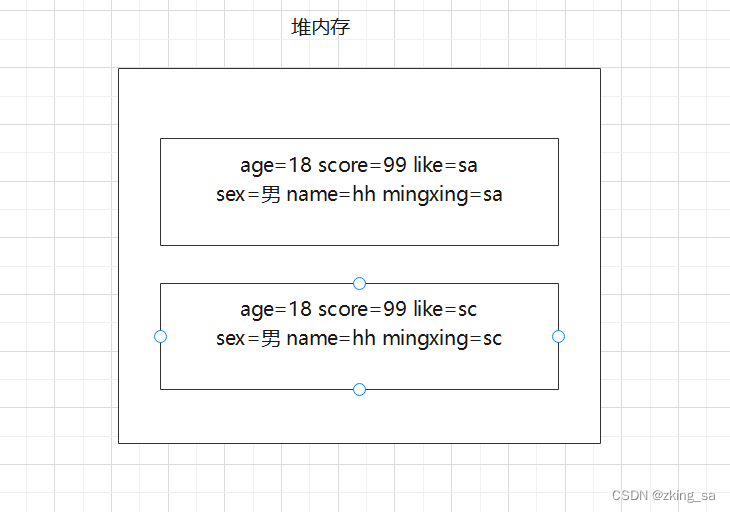文章目录:
总结:多记多练
前言
提示:这里可以添加本文要记录的大概内容:
例如:随着人工智能的不断发展,机器学习这门技术也越来越重要,很多人都开启了学习机器学习,本文就介绍了机器学习的基础内容。
提示:以下是本篇文章正文内容,下面案例可供参考
一、IO流
1.输入流:
字节输入流:InputStream
字节输入流:Reader
2.输出流:
字节输出流:OutputStream
字符输入流:Writer
字节流是操作二进制文件的
字符流是操作字符的
如何读写文件,比如从c盘读到d盘:
public static void main(String[] args) throws Exception{
FileInputStream in=new FileInputStream("E:/sa.png");
FileOutputStream out=new FileOutputStream("D:/sb.png");
byte[] buf=new byte[1024];
while (true) {
int len=in.read(buf);
if (len==-1)
break;
out.write(buf,0,len);
}
in.close();
out.close();
}
}
序列化与反序列化
对象——>流——>对象
作用:快速克隆一个对象
@Override
protected Object clone() throws CloneNotSupportedException {
Object obj = super.clone();
System.out.println("被克隆了...");
return obj;
}protected Object deepClone() throws CloneNotSupportedException, IOException, ClassNotFoundException {
// 序列化
ByteArrayOutputStream bos = new ByteArrayOutputStream();
// 获取对象输出流
ObjectOutputStream oos = new ObjectOutputStream(bos);
// 将当前的对象
oos.writeObject(this);// 反序列化
ObjectInputStream ois = new ObjectInputStream(new ByteArrayInputStream(bos.toByteArray()));
Object obj = ois.readObject();
return obj;
}
}

二、JSP
1.九大内置对象
标签库:c标签
<%@ taglib uri="http://java.sun.com/jsp/jstl/core" prefix="c"%>
2.指令:
page:设置编码集
taglib:导入标签库
include:包含界面
动态包含
<jsp:include page=""></jsp:include>
静态包含
<%@include file="common.jsp" %>
三.servlet
是什么?运行在服务端的程序
怎么用?
1. extends HttpServlet
配置映射①web.xml ②@webservlet("/demo")
实现方法:doget/dopost
2. 生命周期?
初始化:init
服务:service
销毁:destroy
3.doget/dopost
对应处理get/post请求
request的常用方法
setcharsetencoding()
getparameter()
getsession
....
4.页面跳转:重定向与转发
response.sendredirect();
request.getrequestdispather.forword
区别:
转发:能够传递数据,并且地址栏不会发生变化
重定向:不能传递数据,地址栏会变化
public class DemoServlet extends HttpServlet{
@Override
protected void doGet(HttpServletRequest req, HttpServletResponse resp) throws ServletException, IOException {
super.doGet(req, resp);
}
@Override
protected void doPost(HttpServletRequest req, HttpServletResponse resp) throws ServletException, IOException {
System.out.println("come in....");
super.doPost(req, resp);
req.setAttribute("name","sa");
req.getRequestDispatcher("a.jsp").forward(req, resp);
}
}
5. 四大作用域:
pagecontext,request,session,application
session与cookie的区别
session:服务端
cookie:客户端
相同:都可以保存数据
不同:
服务端:安全性高,占用大量的服务器资源;
客户端:安全性低,占用少量内存;cookie存储数量是有限的;
四.Spring
1.ioc:
控制反转、依赖注入
由原来程序员手段创建对象的权利,转交给Spring容器;
优点:代码的维护性提高了
2.aop:
面向切面
代理=目标+通知
将核心业务与非核心分离,使程序员将精力都放在核心业务中;
定义切面:* *..*.*service.*del(..)
定义通知:@around
3. 注入的方式:
set注入
构造注入:
自动装配:byname,bytype
@autowised @resource

SpringMVC
Mybatis
总结
提示:多记多练
例如:以上就是今天要讲的内容,本文仅仅简单介绍了java的基础























 被折叠的 条评论
为什么被折叠?
被折叠的 条评论
为什么被折叠?








